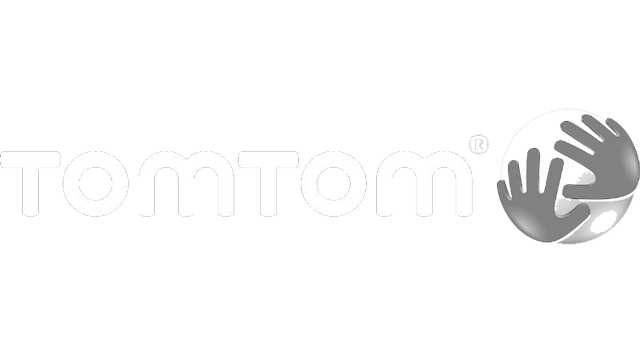We specialise in serving headquarters of global brands, helping them cut complexity costs in strategy execution across markets and fulfil their corporate role as scale economisers and advantage accelerators. Leverage our consulting expertise, technology solutions and remote talent resources to create organisational simplicity, scalability and efficiency in multi-market market operations.
Transforming global brand marketing, creative and eCommerce operations into a competitive advantage
 (EMEA) 47 markets
(EMEA) 47 markets
 (EMEA) 14 markets
(EMEA) 14 markets
 (WHQ)
(WHQ)
Putting a third of world population under a lockdown, paralysing normal life and consumption, the fallout of global pandemic of coronavirus COVID-19 and its containment efforts, will be a deep economic recession. Despite the announced government financial mitigation measures and pledged stimulus packages aimed at immediate economic relief and post-pandemic revival of the hard hit economy, most companies across the world have already taken cost-cutting measures and are sharpening the knives for more. Most drastic and most painful ones were taken by companies in sectors hit hardest - such as travel, hospitality, apparel & fashion and non-food physical retail who saw their revenue disappear overnight. Employees have either been laid off, furloughed or sent on (un)paid leave, contracted orders have been halted, retail space rent payments suspended and plans for new projects, partners or vendors have been frozen indefinitely.
Most companies across the world have already taken cost-cutting measures and are sharpening the knives for more
The Usual Response : Axing The Marketing Budgets?
As global economy is heading towards recession, many companies are trying to shore up their top lines by cutting marketing spend. Brands have one of two problems: either they can’t meet demand because of panic buying, so who wants to stimulate short-term sales; or they have no customers because people are not allowed to go and buy it, in which case, again it makes no sense to engage in marketing. There is certainly little reason for brands to be investing in activity that drives sales activation given that demand has either reduced dramatically or peaked, putting pressure on supply chains. Gartner's recent poll suggests that 65% of marketers brace for budget cuts due to COVID-19. Almost two-thirds of the marketing leaders who attended one of their webinars expect to face moderate or significant budget cuts in 2020. Marketing consultancy Ebiquity recently surveyed the outlook of 44 major global advertisers with a combined media spend of over $15bn. Almost all were rethinking budgets for the year, with 80% planning to cut spend altogether.
Gartner's recent poll suggests that 65% of marketers brace for budget cuts due to COVID-19
.jpg)
So what will be the impact on marketing, media and advertising? Well, what happens in most organizations in the time of fiscal restraint is that marketing budgets are cut. Back in 2007 – 2009 recession this was usually a 30% cut plus. How deep the cut will be and across which functions is a moving target, as that will depend on specific industry, country and individual company. Most estimates suggest advertising investment is likely to be reduced by between 30% and 60% over the rest of 2020 and beyond.
Most estimates suggest advertising investment is likely to be reduced by between 30% and 60% over the rest of 2020 and beyond.
Should marketing budgets be cut, is another story. Advertising industry is, understandably, eager to argue against budgets cuts in times of recession. In fact, it present arguments, sound enough, that brands who invest during times of recession, will reap extra benefits. Reasoning goes that with market less cluttered, messaging is more effective, rewarding companies with higher market shares and sales. And there is some historical and scientific evidence to support this claim. "The best marketers will be upping, not cutting, their budgets" claims Mark Ritson, a brand consultant and former marketing professor, in an article for MarketingWeek, offering the data backed studies of marketing effect on the company sales & market share during and post-recession by several authors such as Roland Vaile, Alex Biel and Stepehn King and Gerry Tellis.
.jpeg)
For example, Vaile's research results of 1920s recession and company behaviour in terms of marketing investments demonstrated that companies that increased their ad budgets during the recession grew sales much faster than their rivals – not only during the downturn but also beyond it.
Taking into account the importance of brand marketing communication, as prerequisite for market share and sales growth, exploring an alternative approach to cost cutting within the global marketing function might be worthwhile.
What is right and what is the reality, however, are most of the time two different things. Very few companies are able to absorb the present top line revenue crunch without cutting own costs. Faced with the pressing reality of negative numbers, cutting salaries, number of staff or marketing budget by 50% is a no-brainer decision for any manager. But, taking into account the importance of brand marketing communication, as prerequisite for market share and sales growth, exploring an alternative approach to cost cutting within the global marketing function might be worthwhile.
Budget Cutting Alternative : Rationalising The Global Brand Marketing Operating Model
With a knife already in hand, the fastest and easiest cut to make is on most visible elements of global marketing function costs - marketing budgets (media & agency costs). Although most obvious and most prominent, indiscriminate chopping of marketing budgets might actually do more damage than good. Both in short term and especially in the long term - both for the brand equity, market share and sales prospectives - both during and after the recession.
Indiscriminate chopping marketing budgets might actually do more damage than good.
.jpg)
Instead of making indiscriminate cuts, which may provide quick savings, but will compromise the organisations' marketing and brand building capability, economising across and within the global brand marketing operating model will achieve same if not greater costs reduction, but as a result of a higher productivity. And this is the main difference between the two approaches. First one looks to make the cuts from 'as is' state of operations, while the other aims to reconfigure how business done to produce savings both in terms of money and organisational time.
Rationalising across and within the global brand marketing operating model will achieve same if not greater costs reduction, but as a result of a higher productivity
As defined in the paper titled "Activating Global Operating Models : Bridge from Organisation Design to Performance, published in the Journal of Organisational Design, by A.Kates and G.Kesler : " the global operating model is the artful combination of organizational structures, processes, governance mechanisms, metrics, and reward systems that tie together center-based business and functional teams with far-flung geographic teams in order to execute complex business strategies around the world". Applying this definition to an individual function of global brand marketing, our economisation proposal turns from indiscriminate marketing budget cuts, to cost scrutinisation of the relationship between HQ and country teams in global brand marketing execution.
.jpg)
Our rationalisation proposal turns from indiscriminate marketing budget cuts, to cost scrutinisation of the relationship between HQ and country teams in global-to-local brand marketing execution.
Namely, global operating model of brand marketing function is plagued by complexity costs. J.B Steenkamp, emphasises this in chapter "Organizational Structures for Global Brands" of his 2017 published book " Global Brand Strategy : World-wise Marketing in the Age of Branding", giving them a collective name - global brand paradox. In global brand management a 'global brand paradox' describes the situation where complexity costs or the organisational setup of a global organisation outweighs the benefits of global brand as a marketing strategy. What happens is that even though global organisations initially reap benefits from global branding approach in terms of global reach and cost production saving, in the process of going global they become so big and so complex, that managing a global brand creates it's own, newly created, and previously unknown costs - complexity costs of global organisations.
Hidden in the configuration of organizational structures complexity costs of global brand marketing function amount to millions of euros every year.
How can we help?
Hidden in the configuration of organizational structures, (lack of) processes, governance mechanisms, metrics, and reward systems, complexity costs of global brand marketing function amount to millions of euros every year. Prioritising growth over internal efficiency during the years of prosperity, global brand marketing teams have grown accustomed to turning a blind eye to rampant waste of time and money in global execution. Budget and role duplication, endless agency rosters and roles, competitive infighting between headquarters and countries and failed projects are just some of money drains that syphon away hundreds of thousands if not millions of euros every year.
Global brand marketing teams have grown accustomed to turning a blind eye to rampant waste of time and money in global execution
.jpg)
Reconfiguring how global-to-local brand marketing is done through implementation of process driven technology workflow solutions and geographical optimization of digital brand marketing production, we were able to save clients like Nike EMEA and Uber EMEA millions of euros in marketing costs. For specifics please check out our client cases available on the website below or schedule a call with us.
Economisation of the global brand marketing operating model is based on :
- CENTRALISATION OF DIGITAL GLOBAL BRAND MARKETING MANAGEMENT
Cost and efficiency gains from centrally managing digital brands are one of the driving forces to increasing centralisation of digital brand marketing management. Having a centrally assembled team that runs global operations saves both time and budgets rather than having multiple national teams working with different vendors / agencies. It prevents duplication of work, and duplication of costs. We help clients initiate and drive movement of (digital) brand management from territories/local units to central or headquarter teams. As centralisation means abdication of part of authority, autonomy and budgets by country offices, we carefully strategise and execute the transition to make sure this change does not create permanent organisational rifts and future competitive infighting.
- WORKFLOW OPTIMISATION & DIGITISATION IN GLOBAL BRAND MARKETING EXECUTION
Global brand campaign execution architecture stemming from notoriously non-process driven brand function nestled within a complex matrix organisation is often a source of colossal waste of time, money, data and missed opportunities. With creation of clear roles, steps and collaboration processes enforced through a tailored digital solution we help avoid misunderstandings, duplication and chaos in execution which cost both money (agency overtime charges) and time (extra hours staff time). Digitised execution is benchmarked & continuously optimised, while global brand marketing execution know-how and best-practices in shape of digital solution features is permanently institutionalised.
- DIGITAL DECOUPLING
Digital decoupling— a process where marketing and brand teams separate and work with different partners to complete creative and production activities. Significant cost savings resulting from moving production of digital work to lower cost locations and improved efficiency gained from having a dedicated team with deep digital production capabilities to serve clients. Global brands are able to save as much as 30-60 percent using the digital decoupling approach. In the process of digital decoupling we move the implementation & adaptation to Balkan country based hubs while creating tailored digital ordering & production relationship management process that simplify & streamline collaboration.
- BRAND MARKETING ROLE RE-FOCUSING & RE-PRIORITIZATION
As business grows and reorganisations come and go Individual roles and their tasks are inspected and their priorities re-focused by removing non-value adding activities either thorough outsourcing to an external partner or digitisation within the platform solutions.
- DATA ANALYTICS DRIVEN OPTIMIZATION INSIGHTS
As majority of branding operations are done through email chains data is lost and unrecorded in a systematic way and branding decisions are made based on gut feelings and personal experience. Without a centralised system which would treat global branding execution as a business process, data is lost, and trapped in individual inboxes or at best on organisational levels (such as EMEA or a single country). By introducing platform solutions at different departments/ stakeholders / workflows we're able to capture process data & generate insights to guide operational improvements of organisational execution.
- DIGITAL USER ADOPTION
When it comes to implementation of digital transformation projects, few things can go as wrong as with its most complex, yet crucial element - people. Digital transformation is not just an IT project. To be done well, it drives a massive shift in human behaviour. To get rapid results and highest returns on digital investments we use several digital adoption strategies to foster behaviour change and adoption of new - digital tool enabled ways of working. Our user adoption team believes you have to ease the change for employees and prepare them for the transition as a team. That’s possible when executive and program team leaders communicate designs, definitions, processes, and information about functionality with key stakeholders as soon as decisions are made.
References :
Kates, A., & Kesler, G. (2015). Activating Global Operating Models: The bridge from organization design to performance. Journal of Organization Design, 4(2), 38-47.
Steenkamp, Jan-Benedict. (2017). Organizational Structures for Global Brands. 10.1057/978-1-349-94994-6_6.
Anna Maria Virzi, "Gartner Poll: 65% of Marketers Brace for Budget Cuts Due to COVID-19", Gartner for Marketeers. https://blogs.gartner.com/anna-maria-virzi/2020/03/20/gartner-poll-65-marketers-brace-budget-cuts-due-covid-19/
Sarah Vizard, "It’s the recession on steroids’: Why brands need to think long-term amid the coronavirus pandemic, MarketingWeek.com. https://www.marketingweek.com/coronavirus-long-term-brand-building/
Darren Woolley, "Coronavirus: how will agencies survive marketing budget reduction?" The Drum, https://www.thedrum.com/opinion/2020/03/06/coronavirus-how-will-agencies-survive-marketing-budget-reduction
Jennifer Faull, ‘The rule book has been ripped up’: agencies rethink pitching during coronavirus slowdown" The Drum https://www.thedrum.com/news/2020/04/07/the-rule-book-has-been-ripped-up-agencies-rethink-pitching-during-coronavirus
Mark Ritson, "The best marketers will be upping, not cutting, their budgets", MarketingWeek https://www.marketingweek.com/mark-ritson-marketing-spend-recession-coronavirus/
 (1).jpg)
